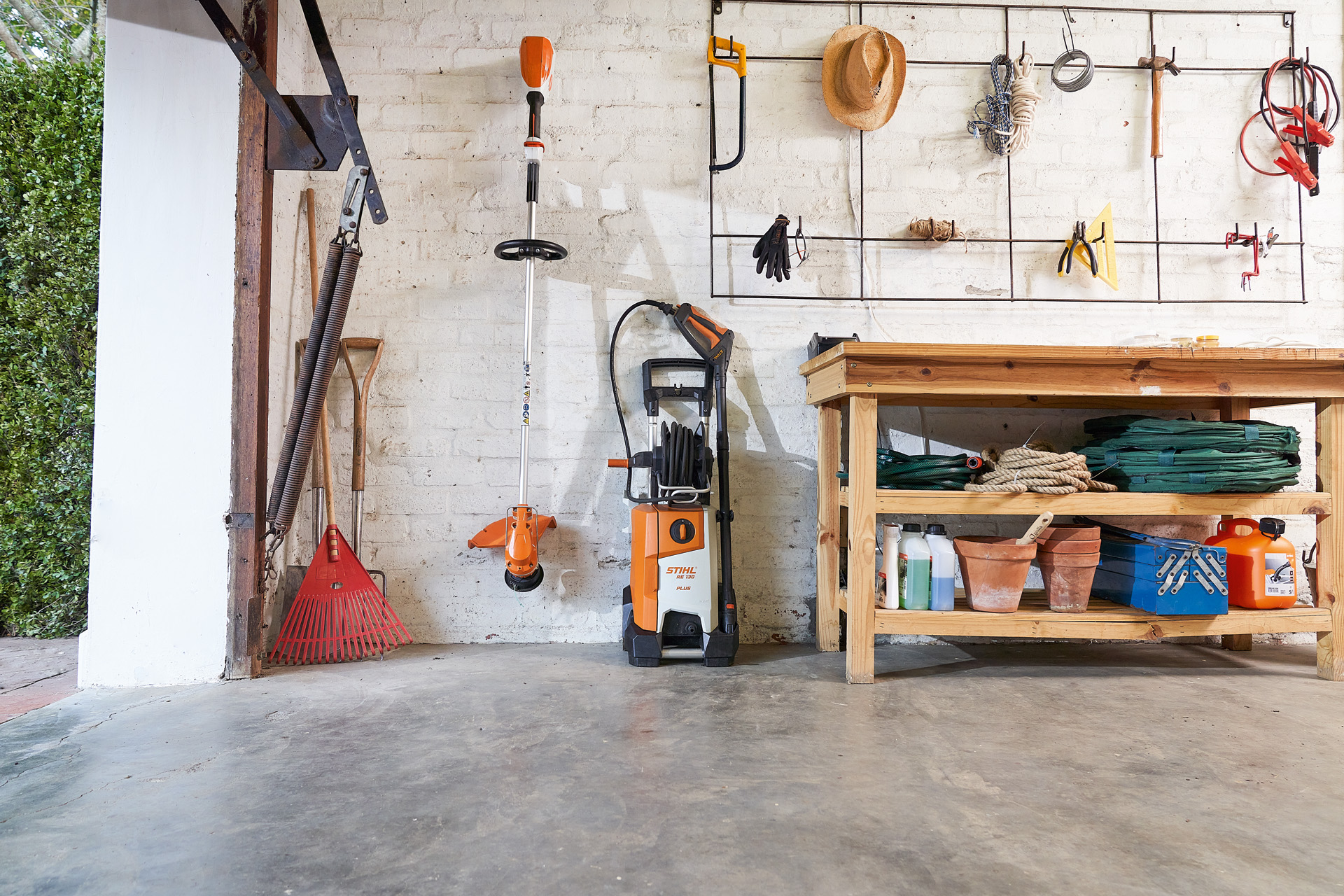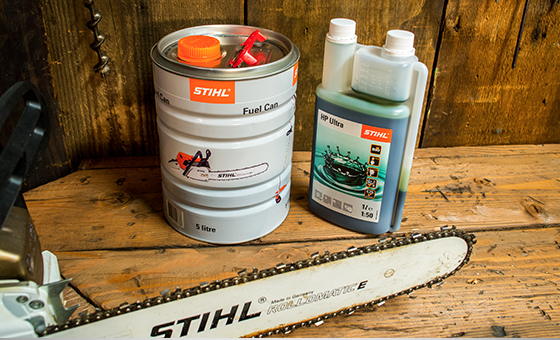Prepare your tools for Winter
You’ve trimmed your hedges and your lawn, cleaned up corners and hard-to-reach places and chopped your wood. All of this leaves traces of plants and wood on your tools, so a thorough cleaning is the most important thing to do in Autumn.
13.08.2025

INSPECTION TIME
Power tools, such as lawn mower and hedge trimmers, should be inspected one last time at the end of the season before they go into hibernation for several months in the winter. In general, you have to take good care of your helpful garden tools if you want to be able to use them again right away when spring comes.
THOROUGH CLEANING
You can use a wooden or plastic spatula to remove grass residue that is stuck inside the housing of your lawn mower. Also remove any grass from the cooling fins and exhaust area. Clean the lawn mower with a brush and water. A garden hose can additionally help with the cleaning. But be careful: don’t use a powerful jet of water on the bearings, gaskets or engine parts, as this could damage the machine. To remove dirt from the underside of the housing, tilt the mower backward so that the spark plug points upward. If you tilt the machine sideways, oil could enter the air filter or the exhaust, which could cause damage.
Now on to your chainsaw. Remove the saw chain and the guide bar, and clean sawdust and wood shavings out of the housing. You should also clean the knives of your mower and hedge trimmers, as well as the cutting tools of your brushcutter and the chain of your chainsaw. Resin solvent sprays get rid of stubborn dirt reliably. With petrol-powered tools, pay particular attention to cleaning the cylinder fins and the air filter. You can buy a special cleanser for the air filter.

THE FINISHING TOUCH
A check of cutting tools before the winter break is an ideal way to make sure full cutting performance is available at the start of the new season. These tools may also need to be sharpened. We recommend going to an expert for this. He or she will take a close, critical look at hedge-trimmer and lawn-mower knives, metal cutting blades and saw chains. If a grass-cutting blade shows signs of wear and tear, such as tiny cracks, it must be replaced for safety reasons. However, an expert resharpening is usually all your tools need to work perfectly when spring arrives. Carbide-tipped saw chains, which are harder-wearing in private use and usually only need to be sharpened once a season, are particularly practical for chain saws.
EMPTY TANK
Before your tools take a break during winter, you should empty the tanks of your petrol-powered tools in a well-ventilated place. The volatile matter in fuel evaporates in the tank, so it will lose its combustibility over a longer period of time. As a result, you may have problems starting your tools up in spring. To empty the petrol completely, pour the contents of the tank out of the filling hatch into a well-insulated canister. Then start up the engine and let it idle until it comes to a stop of its own accord. This ensures that the tank and all the suction hoses are completely empty and that the carburettor diaphragms do not stick together. On the other hand, you should fill up your chainsaw chain-oil tank as full as possible, especially if you use organic lubricants.

30% CHARGE
Remove the Battery from Battery-powered tools before you store them in order to prevent them from starting up accidentally. If you do not use the Batteries for a long time, we recommend loading them with a 30% charge and then loading them up completely before the next time you use them.
CHOOSING THE RIGHT PLACE TO STORE YOUR TOOLS
The best place to store your tools for the Winter is in a dust-free, dry and frost-free place. Store tools in their normal position. Also, even though nothing can actually happen without fuel, a Battery or an electrical outlet, it is still important to store tools out of the reach of children, especially because of the sharp knives and blades.
For more tips and tricks to make sure your tools are with you for years to come, visit your local STIHL Dealer.





